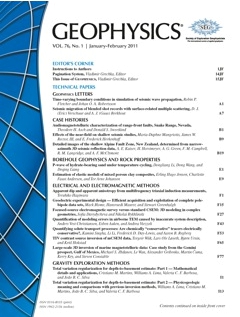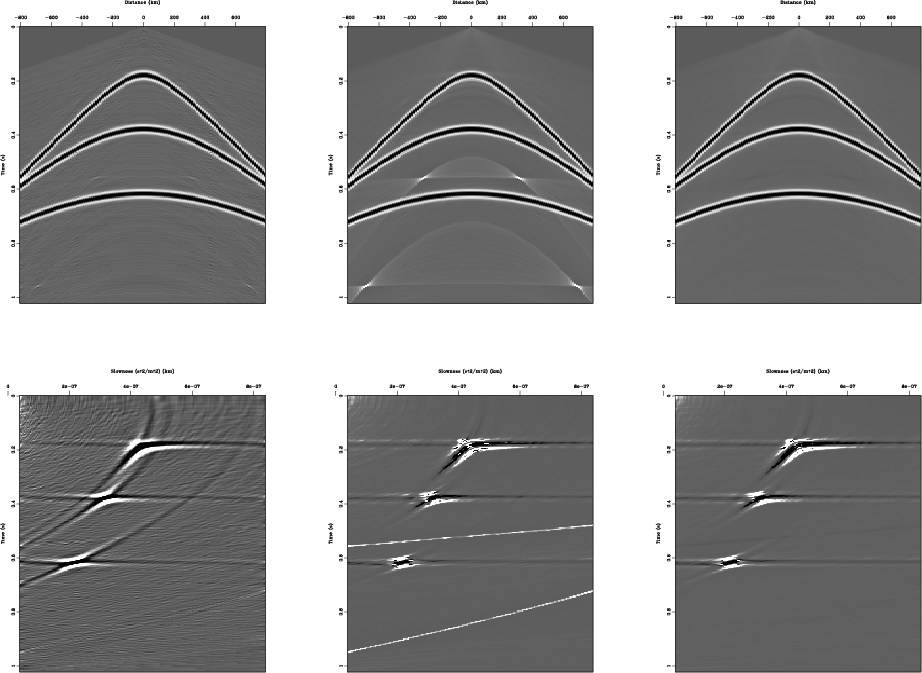A new paper is added to the collection of reproducible documents:
Azimuthally anisotropic 3D velocity continuation

3D velocity continuation
June 4, 2011 Documentation No comments
Microseismic monitoring
May 28, 2011 Documentation No comments
A new paper is added to the collection of reproducible documents:
Micro-earthquake monitoring with sparsely-sampled data

Lorenz attractor
May 17, 2011 Examples No comments
Just for fun… sflorenz computes “Lorenz attractor” in X-Z plane. See an example in rsf/rsf/fractal and an animated gif. Need 3D plot …

An idea for Google Summer of Code 2012
April 27, 2011 Uncategorized 3 comments
In the past, Sergey has proposed several times getting a Madagascar application for the Google Summer of Code (GSOC).
I do not know about other people’s reasons, but I refrained from making suggestions because I had doubts about the chances of success, due to the extremely high specialization of Madagascar, and the fact that GSOC tends to sponsor projects with wide applicability.
Madagascar attempts to provide a complete technology solution for the seismic imaging researcher, and is quite good at that. It is of course extensible to other applications, but most people who do not need the complete Madagascar stack (being either outside the field, or non-researchers) have difficulties understanding the parts and separating only what they need. Needing resources, the Madagascar project finds itself oscillating between:
– trying to expand its scope to fit as many needs at possible (only to discover the increased complexity, fragility and number of dependencies that come with that), and
– focusing on its highly specialized task that it does well, but then discovering that the number of seismic imaging researchers is incredibly small, and how that limits resources seriously.
There is however a deep core concept of Madagascar that has a very wide applicability: the fact that the RSF data format is an out-of-core extension of arrays in memory. Combining together Madagascar programs through a shell or Python script is essentially the same thing as writing a compiled program that calls procedures to act on arrays. It works on datasets too large to fit in memory, but small enough that it is not necessary to transition to a flow-based architecture, in which the memory is allocated only once, and subroutines called successively to act on it. It has its own niche.
How about then, proposing a GSOC project for 2012 to create Madagascar wrappers for the GNU Scientific Library and/or for ATLAS? With OpenMP threading and parallel I/O, to fully use the power of modern multicore architectures. That would be of immediate interest to a very large number of people. So large actually that it may be the case to spin this off as a separate sourceforge project — depending only on the rsflib I/O core. Then we’ll let the mathematicians take care of that project, and as a bonus, we will be able to use the already-existing GSL/ATLAS documentation to know what the similarly-named driver programs are doing! Double bonus, we may get to get rid of some of the current programs which duplicate functionality existing in widely-used packages. Triple bonus, this may lead some people to write Python scripts instead of monolithic driver programs, and this is a Good Thing.
What does the community think?
3-D angle gathers
April 9, 2011 Documentation No comments
A new paper is added to the collection of reproducible documents:
Theory of 3-D angle gathers in wave-equation seismic imaging

How do I prepare a Geophysics article for submission?
March 20, 2011 FAQ No comments
 The Geophysics instructions to authors state
The Geophysics instructions to authors state
Preferred formats for production are Microsoft Word and LaTeX, in that order.
Never mind the order. If you use LaTeX, you are not alone. According to SEG staff, half of submitted papers use LaTeX, including papers from many of the SEG editors. The SEGTeX package has been downloaded from SourceForge more than 5,000 times. Here are some useful trips for producing a Geophysics paper with SCons and rsf.tex:
1. If you don’t use Madagascar for your computations but would like to use the SCons setup for papers, you can download and install the madagascar-framework Python package.
2. To prepare a paper called article.tex for submission, put
in you SConstruct, then run scons article.pdf to produce the manuscript or scons article.read to display it on the screen. If your paper is named paper.tex, you can also put the options in
and use simply scons pdf and scons read. See the wiki documentation for more options and explanations.
3. Submit your paper by login into ManuscriptCentral.
4. After your paper goes through a round of revisions, you will be asked to prepare and submit both the new version and the revised version with the revision clearly marked. Use \old{} and \new{} macros to mark your changes, as shown in the example. You can produce both PDF files from once source using something like
use rsf.tex
Paper('article',options='manuscript')
Command('article-revised.tex','article.tex','cp $SOURCE $TARGET')
Paper('article-revised', options='manuscript,revised')
5. When submitting the final version, you will be asked to submit the LaTeX file that includes bibliography. If you use BibTeX, do the following:
- Run scons article.pdf
- Open article.ltx in an editor and replace the line \bibliography{} with the contents of article.bbl.
- Submit article.ltx.
6. When submitting the final version, you will be asked to submit high-resolution figures in EPS format. Run scons article.figs to generate figures suitable for submission.
7. Geophysics may insist that the labels on the vertical axis in your Madagascar plots should run horizontally, rather than vertically. To comply with this bizarre requirement, you may need to regenerate your plots using parallel2=n option.
See also:
Angle gathers for TI media
February 19, 2011 Documentation No comments
A new paper is added to the collection of reproducible documents:
Angle gathers in wave-equation imaging for transversely isotropic media

madagascar-1.1
January 17, 2011 Celebration No comments
The 1.1 release features 12 new reproducible papers, multiple bug fixes, and a Graphical User Interface (thanks to Jeff Godwin). The cumulative number of all previous stable-release downloads has exceeded 12,000.

Texture synthesis
January 17, 2011 Documentation No comments
Another old paper is added to the collection of reproducible documents:
Texture synthesis and prediction error filtering

Conjugate guided gradient
January 13, 2011 Documentation No comments
A new paper is added to the collection of reproducible documents:
Conjugate guided gradient (CGG) method for robust inversion and its application to velocity-stack inversion

This paper is the first contribution to Madagascar by Professor Jun Ji from Hansung University, Korea.